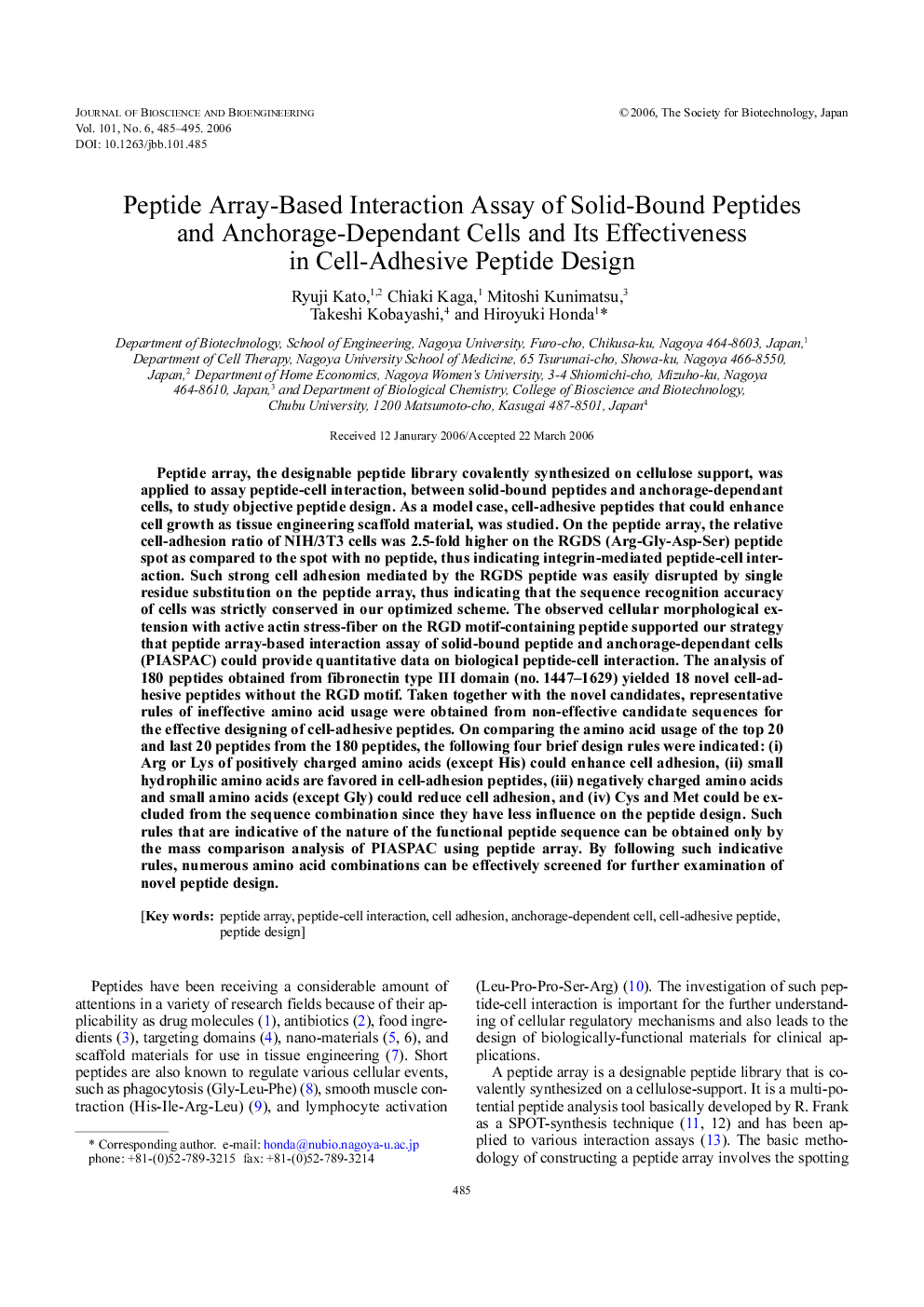| Article ID | Journal | Published Year | Pages | File Type |
|---|---|---|---|---|
| 22073 | Journal of Bioscience and Bioengineering | 2006 | 11 Pages |
Peptide array, the designable peptide library covalently synthesized on cellulose support, was applied to assay peptide-cell interaction, between solid-bound peptides and anchorage-dependant cells, to study objective peptide design. As a model case, cell-adhesive peptides that could enhance cell growth as tissue engineering scaffold material, was studied. On the peptide array, the relative cell-adhesion ratio of NIH/3T3 cells was 2.5-fold higher on the RGDS (Arg-Gly-Asp-Ser) peptide spot as compared to the spot with no peptide, thus indicating integrin-mediated peptide-cell interaction. Such strong cell adhesion mediated by the RGDS peptide was easily disrupted by single residue substitution on the peptide array, thus indicating that the sequence recognition accuracy of cells was strictly conserved in our optimized scheme. The observed cellular morphological extension with active actin stress-fiber on the RGD motif-containing peptide supported our strategy that peptide array-based interaction assay of solid-bound peptide and anchorage-dependant cells (PIASPAC) could provide quantitative data on biological peptide-cell interaction. The analysis of 180 peptides obtained from fibronectin type III domain (no. 1447–1629) yielded 18 novel cell-adhesive peptides without the RGD motif. Taken together with the novel candidates, representative rules of ineffective amino acid usage were obtained from non-effective candidate sequences for the effective designing of cell-adhesive peptides. On comparing the amino acid usage of the top 20 and last 20 peptides from the 180 peptides, the following four brief design rules were indicated: (i) Arg or Lys of positively charged amino acids (except His) could enhance cell adhesion, (ii) small hydrophilic amino acids are favored in cell-adhesion peptides, (iii) negatively charged amino acids and small amino acids (except Gly) could reduce cell adhesion, and (iv) Cys and Met could be excluded from the sequence combination since they have less influence on the peptide design. Such rules that are indicative of the nature of the functional peptide sequence can be obtained only by the mass comparison analysis of PIASPAC using peptide array. By following such indicative rules, numerous amino acid combinations can be effectively screened for further examination of novel peptide design.
